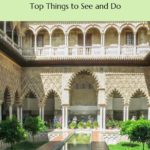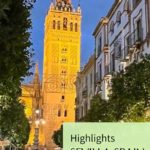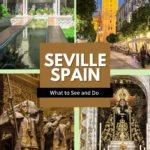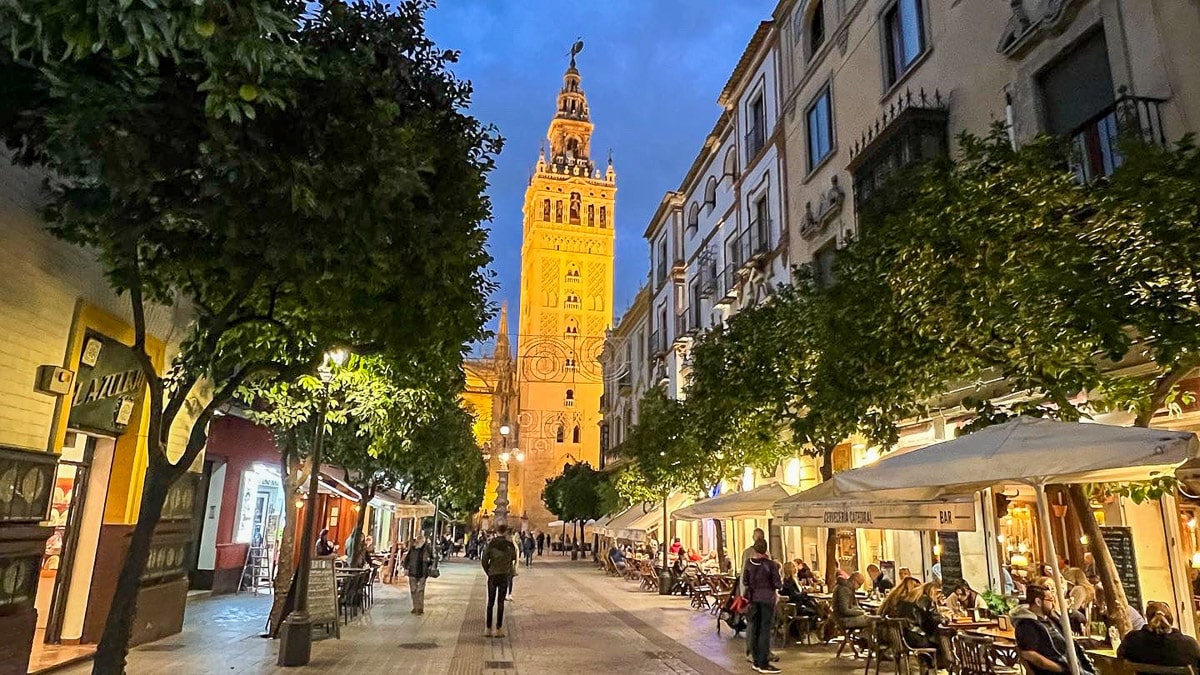
There are lots of things to do if you have a few days in Sevilla. If it's your first time, you should stick to the obvious tourist attractions–not because they're tourist attractions, but because they're worth seeing. That's why they are tourist attractions, after all.
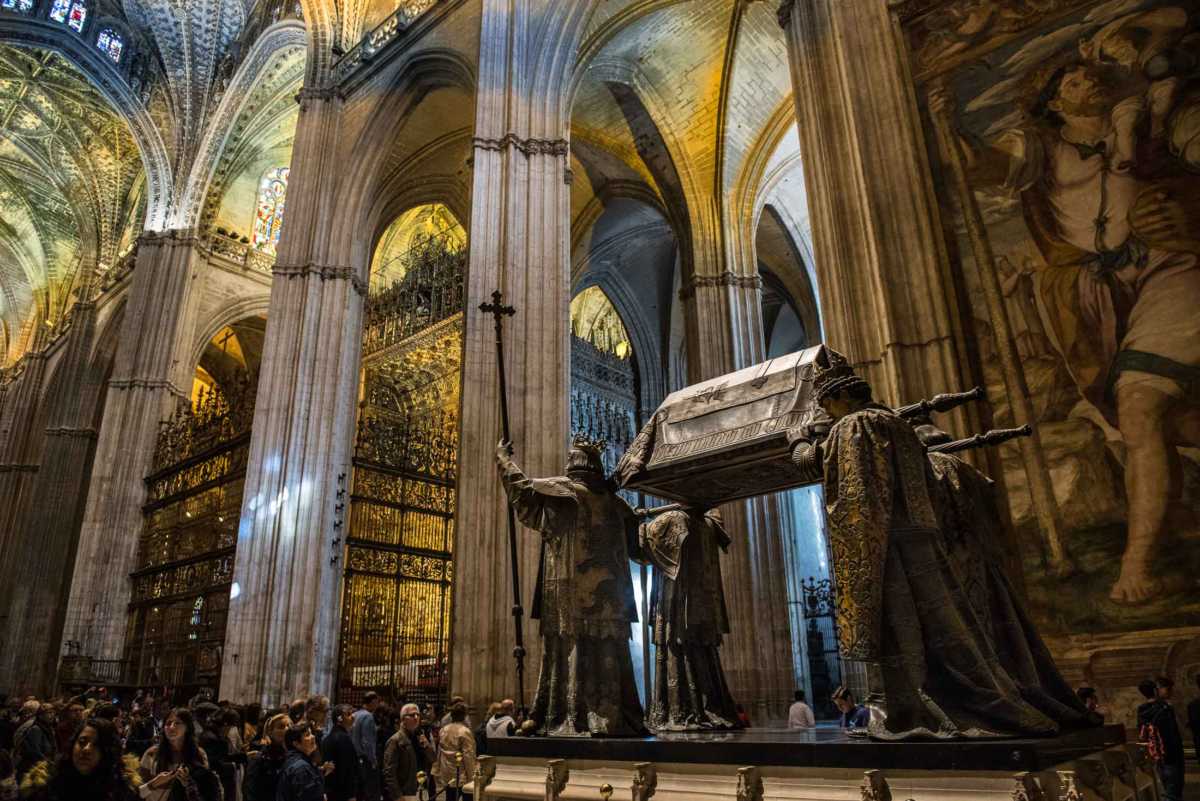
Table of Contents
The Cathedral of Sevilla
The Cathedral of Sevilla is the biggest cathedral in Spain, and the third biggest in the world. It's got the usual over-the-top art, an enormous altar, which was unfortunately under restoration when we visited, and an impressive organ and carved wood choir. It has a few nice paintings from Murillo, Zurburan, and the rest of the Sevilla School. My favorite painting in the cathedral is Goya's rendition of Santa Justa and Santa Rufina, the patrons of Sevilla, pictured with the Giralda, the Cathedral's bell tower. (This is a recurring theme in Sevilla and the renditions of the scene by Murillo, Zurburan, and most every other painter who ever got a commission in Sevilla are all over the place.) In particular, though, it has an amazing collection of reliquaries you can see in the “Treasure” exhibit. Despite the immense scale of the building itself, the small architecturally sculpted reliquaries–depositories of some purported sliver of some saint's bone usually–are, to me, the most curious and bizarre artifacts of the Catholic Church. And that's saying something. By the way, there's also the crypt of Christopher Columbus, who was a fairly important figure in the history of the world.
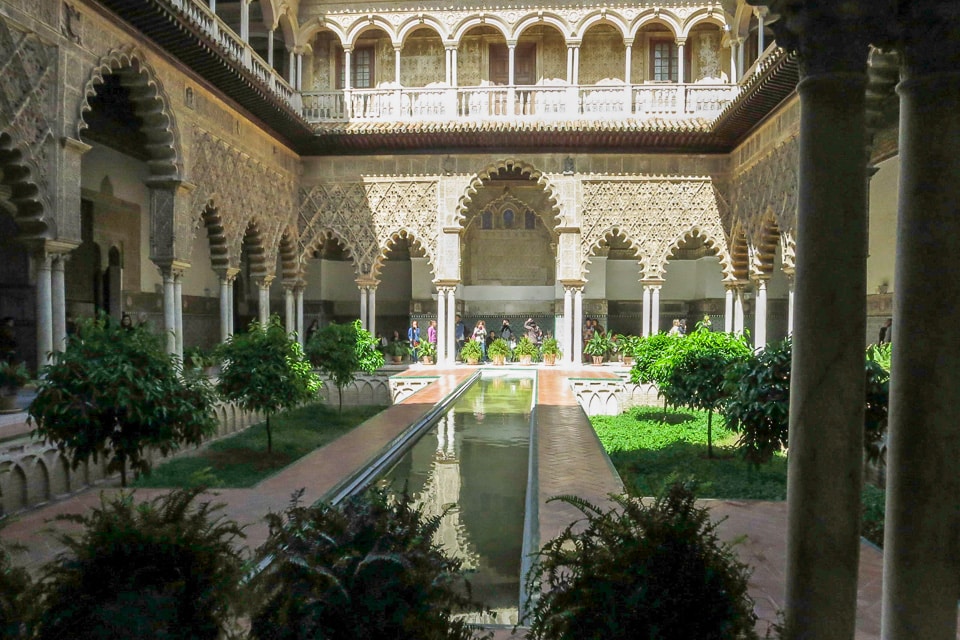
El Alcázar
The Alcázar is what's left of the Moorish castle re-purposed by Spanish monarchs after the reconquest. The Muslims, to my mind, were much better decorators than the Christians, and you see evidence of their work everywhere. You also see evidence of the subsequent Spanish messing with perfection to insert their own iconography and various other architectural “enhancements.” Luckily, most of the original decoration survives, and, while it's no Alhambra, it's still lovely.
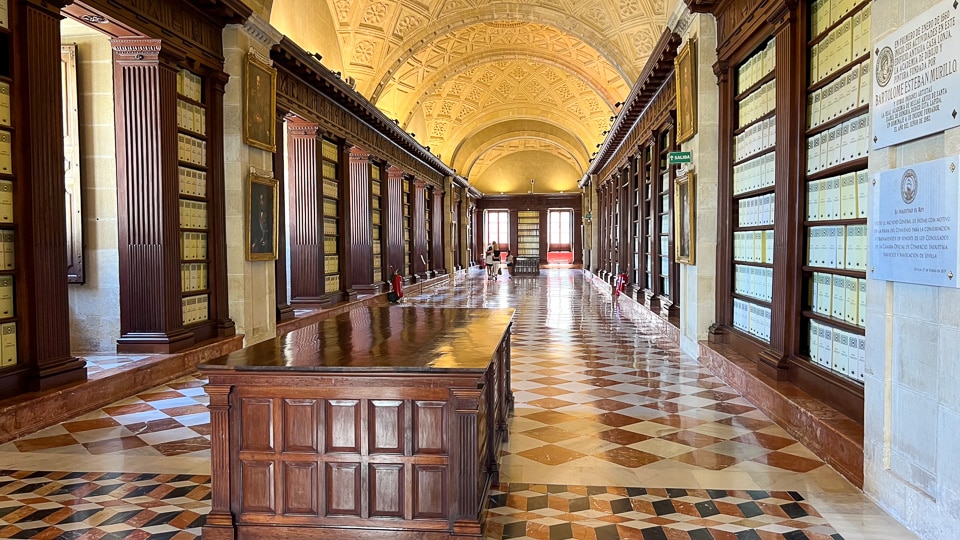
El Archivo de Indias (The Archive of the Indies)
This library is probably of more interest to someone who can read Spanish, and to scholars of Spanish American history. It's the repository of all the official correspondence between the officials, both major and minor, who minded the vast Spanish empire in the new world after Columbus. The Archive has periodic themed displays of these documents, but they are small and take only a little while to view. When we were there a long time ago, they were showing the letters from Christopher Columbus to Queen Isabel describing what he had found in the New World. The 500-year-old script was hard to read, although Columbus (or Cristóbal Colón, as he's called in Spanish) had rather nice handwriting. Isabel's was terrible. Another interesting exhibit was of several original copies of Cervantes' Don Quixote that had been exported to the New World.
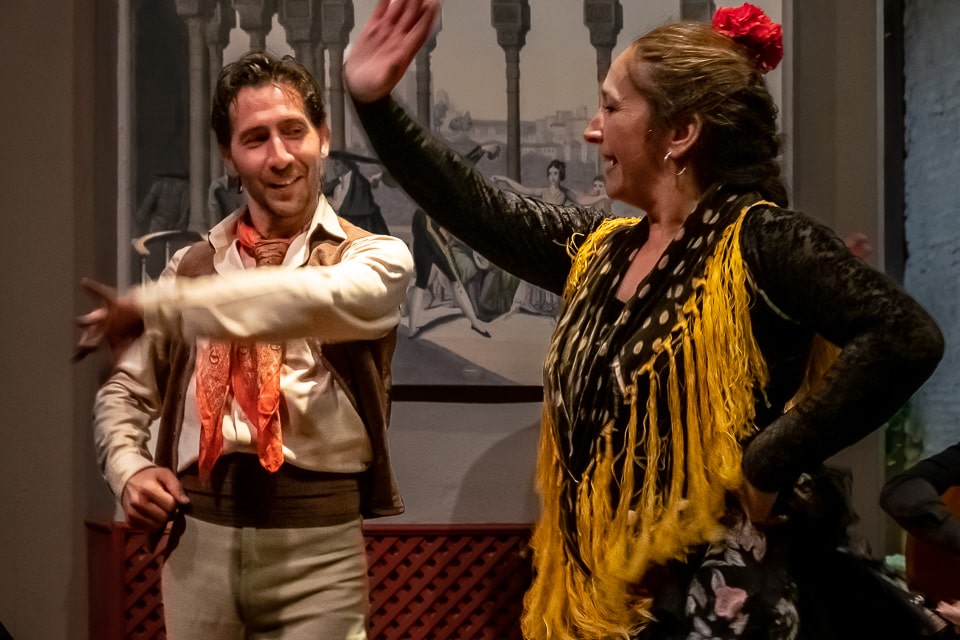
Flamenco
There are lots of places to see Flamenco in Sevilla, from expensive touristy spots with big shows and lots of drinks, to inexpensive, more cultural, exhibitions where you'll see the “real” stuff without the club atmosphere. We chose the latter this time and went to the “La Casa de la Memoria” (The House of Memory) on Calle Cuna (Telephone +34 954 560 670) where we saw marvelous singing, guitar playing and dancing. Like I said, it's more of a concert, as opposed to a club, atmosphere, so you have to accept a certain lack of typical ambiance. However, the show is very reasonably priced compared to the more touristy tablaos, and it's generally excellent. They put on a different show every night, with different performers, so the quality will probably vary a bit. And the venue only holds about 60 people and usually sells out. So book in advance. You can show up a bit before the show and sometimes they will add a few folding chairs for late comers, but don't bet on it.
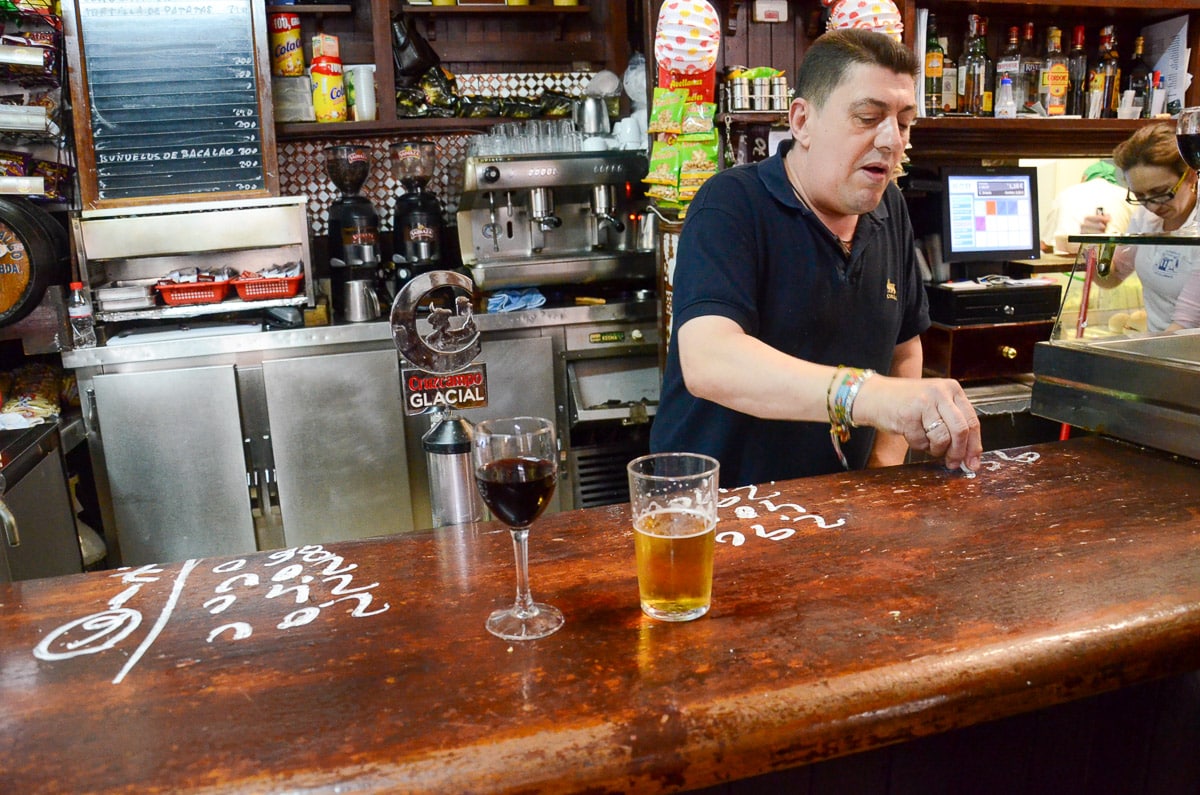
Tapas
Yes, this is Spain and tapear is the way to eat. Especially in the evening, hop from bar to bar eating and drinking a little in each. First, since this is also Andalucía, you can certainly drink the great local beer, Cruzcampo, which as a marketing ploy, is being served out of taps that keep the beer actually below the freezing point of water. In other words, very refreshing in the very hot Sevilla. Also, there's fino, a fine, dry clear Sherry. It's also served very cold and goes great with almost everything Andaluz. (Tio Pepe is the best known brand of this type of Sherry in the U.S. In Sevilla, just order a fino and you'll probably get something out of a bottle you don't recognize, but will nonetheless be delicious.) We found two tapas bars this trip that we really like. Both were in the Barrio Santa Cruz.
One was called Bodega Santa Cruz, which is across the Plaza Virgen de los Reyes and up Mateos Gago street a bit from the Giralda. This is the epitome of a Sevilla bar. It's usually packed with locals and features about 20 different kinds of montaditos (little sandwiches) and a like number of tapas, which are all scribbled on a blackboard above the bar. Early in the evening, they're all available. As they run out of things, they erase them from the board. As you order, the bartender chalks your bill on the bar in front of you. When you pay, he wipes it off.
Slightly less frenetic is the Casa Carmelo just off the Plaza Venerables, a little further into the quiet of the Barrio. It's a few rooms in a beautiful old tiled home and features a large selection of tapas and small plates. We ate calamares, fried sardines, roasted peppers on toasted bread, and a small glass each of perhaps the best gazpacho I've ever tasted. Of course, I say that after about every genuine Andalusian gazpacho I eat, but this one really was good.
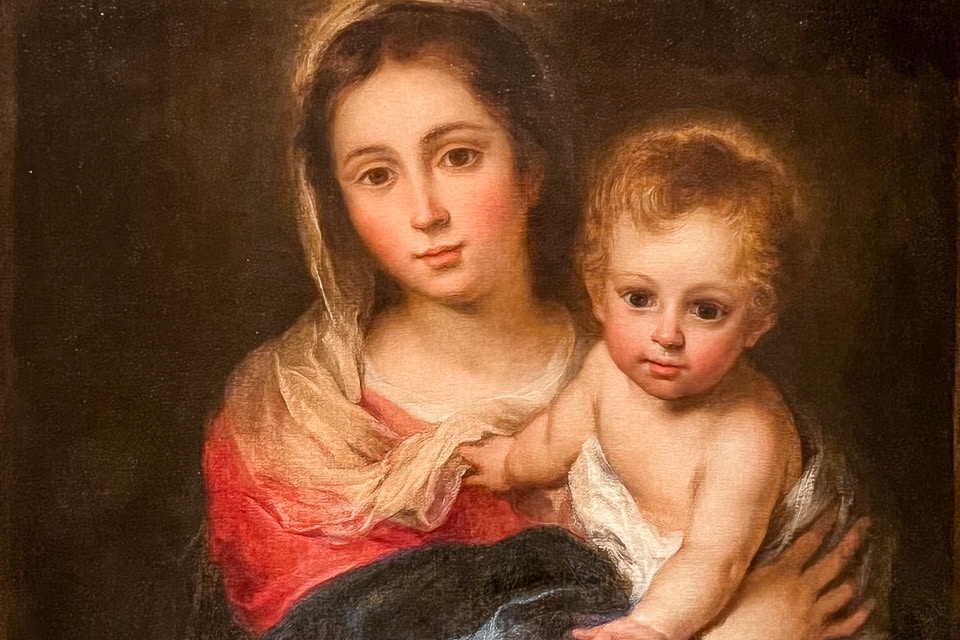
Museo de Bellas Artes
The Fine Arts Museum should be seen for a couple of reasons. It does have the most extensive collection of the Sevilla School of painting, and that means Murillo and Zurburán, who were both great. There are lots of good paintings there, including a couple of my favorites by Murillo: Santas Justa and Rufina with the Giralda, and the lovely Virgin with the Handkerchief.
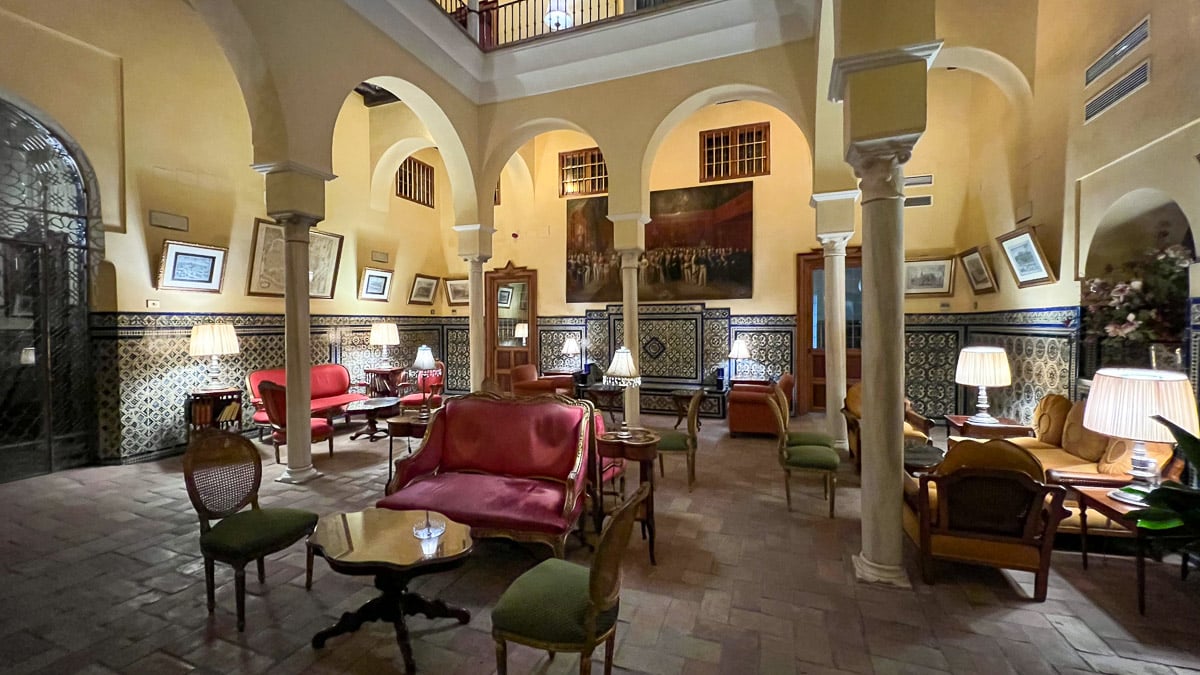
Where to stay in Sevilla
There are plenty of very nice hotels in Sevilla, but our recent discovery of the Casas de la Judería stands out. It's made up of the old homes of the Jews who were expelled from Spain in the 15th Century and is an eclectic collection of suites and smaller rooms connected by alleyways and tunnels under the labyrinthine streets of the Barrio Santa Cruz, the old Jewish neighborhood. It features a very nice lounge, and a terrific bar, to go along with the distinctive atmospheric rooms. Highly recommended.
Up Your Travel Skills
Looking to book your next trip? Use these resources that are tried and tested by us. First, to get our best travel tips, sign up for our email newsletter. Then, be sure to start your reading with our Resources Page where we highlight all the great travel companies and products that we trust. Travel Accessories: Check out our list of all the accessories we carry to make getting there and being there a lot easier. Credit Cards: See our detailed post on how to choose the right travel rewards credit card for you. Flights: Start finding the very best flight deals by subscribing to Thrifty Traveler. Book your Hotel: Find the best prices on hotels with Booking.com. See all of the gear and books we like in one place on our Amazon shop.Got a comment on this post? Join the conversation on Facebook, Instagram, or Threads and share your thoughts!

